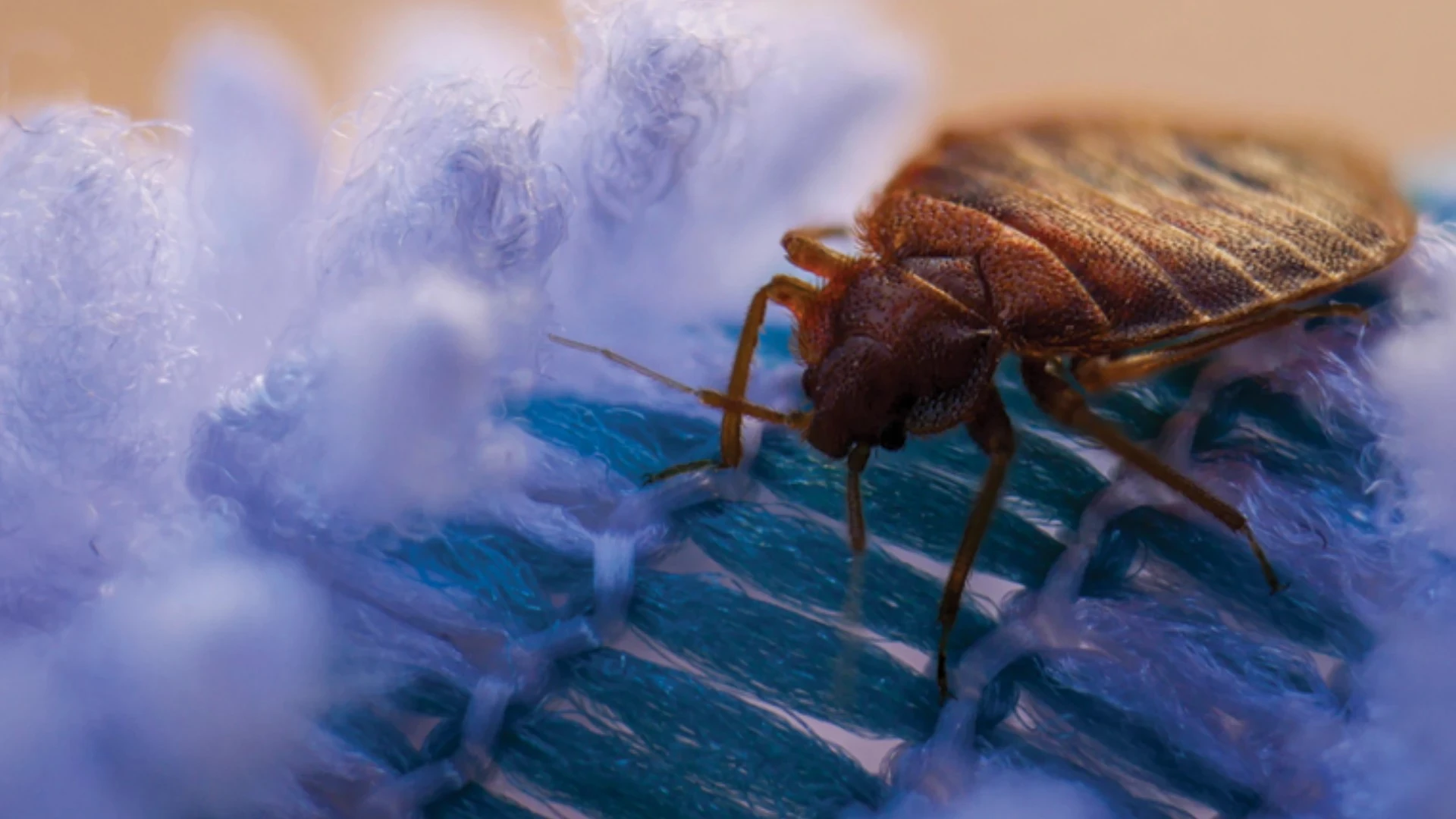There are more than 20 species of earwigs in the United States, but only about three commonly become pests in buildings. All earwigs have some sort of forceps-like device on their rear end, usually straight-sided on the female and curved on the male. The forceps look ominous but they are primarily used to defend the nest, capture prey, probe into cracks and crevices, and help fold or unfold their wings. Some can pinch a little if they are picked up.
Earwigs naturally live outside, feeding on plant material or dead insects. They require high moisture, and are often found in wet areas around building foundations, hiding under mulch, stones, or other materials. Earwigs mostly hide during the day and feed at night, so large populations often go unnoticed. An interesting fact about earwigs is that the female guards and cares for her eggs and newly hatched young in an underground nest until they are able to fend for themselves.
Earwigs enter homes in a number of ways. They may simply walk inside if their habitat becomes dry. They may be drawn to lights, either because of the natural attraction of the light or to feed on other insects attracted to these locations. In both instances, earwigs occasionally invade homes through cracks, holes, under doors, etc. Usually just a few earwigs head indoors but it’s possible that hundreds or even thousands could do so. They also may hitchhike into homes on plants, firewood, or newspapers.
Once inside, earwigs will feed on sweet, oily, or greasy foods, as well as houseplants. During the day they will hide under furniture, behind baseboards, and in cracks, crevices, and voids, usually at floor level.
*****
PEST PROFILE: Earwigs
Description: Adult earwigs are ¼ to 1 inch long and dark brown to black with a red head and pale yellow-brown legs. The body is long and flattened. Earwigs usually have two pairs of wings, the hind wings being fully developed and folded beneath the short, leathery front wings. The thread-like antennae are half as long as the body. The most notable characteristic are the forceps, the pincer-like appendages at the end of the abdomen.
Biology: The female lays several batches of approximately 50 eggs in a nest-like shallow depression beneath a board or stone. In the winter, they hatch in about 72 days and in the spring, they hatch in 20 days. The nymphs look much like the adults, molting four to five times before becoming adults, which takes about 56 days.
Habits: Interestingly, earwig females display a mothering instinct, protecting the nest and the nymphs until they have reached their second molt. Earwigs usually live outdoors feeding on plant material. Very general feeders, they seldom do much damage to plants. They are active at night, hiding during the day under stones and other objects.
(Source: PCT Technician’s Handbook)
*****
EARWIG CONTROL. Indoors, earwig control is much like cockroach control, emphasizing treatment of cracks, crevices, baseboards, and cabinet voids near floor level and near moisture. Treat mainly in the kitchen, bathroom, laundry room and basement areas. Earwigs are easily killed by insecticides. But in most cases the control will be short-lived because new earwigs will continue to invade.
The key factor about earwigs is that they are primarily outdoor-living pests. To control them long-term you and your customers will need to manage the earwigs and their environment outside by taking the following steps:
- Reduce lighting around doors (especially garage doors) and windows, install light shields or substitute lights that are less attractive to insects.
- Eliminate moist, damp conditions at and near the structure caused by old or damaged gutters and downspouts, poor grade, leaky hose faucets, AC condensation and lawn irrigation systems spraying against the house. Any crawlspace should be dry and uncluttered.
- Make the landscape less attractive to earwigs. Near the foundation, avoid heavy organic mulch (if used at all, it should be less than 2 inches deep), ground covers and weedy overgrowth. A clean, dry foundation border is best. Cut the grass short near the house.
- Eliminate earwig hiding places near the foundation such as woodpiles, lumber, debris, leaf litter and compost piles. The space under a deck should be dry and uncluttered.
- Create mechanical barriers by repairing ground-level holes and cracks in the foundation and around door and window frames. Repair or replace inadequate door strips and weather stripping (on the garage door, too).
- A perimeter treatment of any residual (liquid or granule) as labeled for earwig control will help eliminate current populations outdoors and prevent a reinfestation of the home. It is a slight advantage to spray for earwigs in late afternoon so the residue will be fresh when earwigs become active in the evening.
- Some granule baits are also effective against earwigs.
CONCLUSION. Although the normal habitat for earwigs is outdoors, they will move indoors if the outdoor environment dries out. Therefore, it is essential PMPs be well versed in perimeter pest control techniques to control this bothersome pest.
This article was adapted from Techletter, a biweekly publication from Pinto & Associates, Mechanicsville, Md. To subscribe, visit www.techletter.com, or call 301/884-3020.

Explore the March 2010 Issue
Check out more from this issue and find your next story to read.
Latest from Pest Control Technology
- Rentokil Terminix Expanded in Key Markets with 2024 Acquisitions
- In Memoriam: Joe Cavender
- Certus Acquires Green Wave Pest Solutions
- Liphatech Adds Alex Blahnik to Technical Team
- Do the Right Sting: Stinging Insect Identification, Management, and Safety
- VAGA's 8th Annual Veterans Thanksgiving Appreciation Dinner
- Clark's Blair Smith on the Response to Increased Dengue Fever Cases in Southern California
- WSDA, USDA Announce Eradication of Northern Giant Hornet from U.S.





